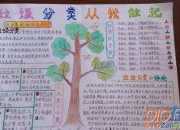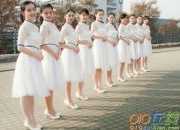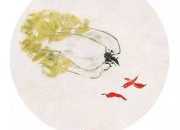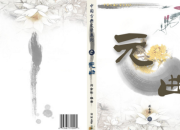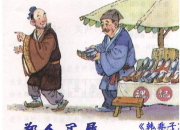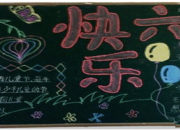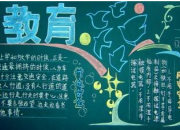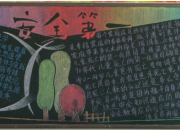高三英语《Angkor wat》教学课件
时间:2021-08-31高三英语《Angkor wat》教学课件
1.重点词汇、短语、句型结构
1 )firm, go ( link v. ) , turn( link v. )
2)stop sb. doing sth. ,put up, keep off ,masses of, as it is ,at war, fall to pieces, take on, in a state, deal with, carry out, desert,spread,besides 和except 的区别,nowhere, search, drill, smooth, keep off, a mass of , fall to pieces, watch over, lay down ,once in a while
3)have sth. to do. . . ,To make things worse, . . .
2.课文掌握程度
1)了解石高棉的历史遗址吴哥窟及以后的变化。
2)能复述课文
3.重点语法
1) Revise the verb tenses:
a)The present indefinite tense
b)The present contiouous tense
c)The present perfect tense
d)The past indefinite tense
2)The passive voice
4.口语交际
Learn to give advice and make suggestions and replies
We’ll have to … We should finish the floor now.
I think we should paint it white. Is it necessary to….?
We must stop people walking on this floor until it’s firm. I ought to do some studying.
教学建议
教学教法:
本单元重点讲述了柬埔寨的著名古迹吴哥窟,教师可通过补充材料加深学生对吴哥窟的了解。教师也可鼓励学生搜集相关资料,谈谈吴哥窟作为一种精神在柬埔寨人民心中的重要地位。同时,课文中出现了许多很好的词汇与句型,建议老师充分利用。
语法:
1. 一般现在时
(1)经常性和习惯性的动作
We always care for each other and help each other. 我们总是互相关心互相帮助。
(2) 现在的特征或状态
He majors in English. 他是英语专业的学生。
(3) 普遍真理
Light travels faster than sound.光比声速度快。
(4) 按规定、计划、安排将要发生的动作。(一般有将来的时间状语)
The plane takes off at 11 a.m. 飞机上午十一点起飞。
(5) 电影说明,动作解说,剧情介绍,新闻标题或小说章节题目,图片说明。
He sits down, shivers a little, Clock outside strikes twelve.
他坐下来,微微有些颤动,外面钟敲了十二点。(剧本说明)
2.现在进行时
(1)现在或现在这一阶段正在进行的动作。
Where are they having the basketball match? 他们在哪里赛篮球?
(2)最近按计划或安排要进行的动作,但这仅限于少量动词,如:go, come, leave, start, arrive, return 等。
We are leaving on Friday. 我们星期五动身。
(3) 代替一般现在时,表示经常性动作和状态,这时是为了表示说话人的一种感情。如赞叹,厌烦,等。
He is always thinking of others. 他总是想着别人(赞许)。
He is constantly leaving things about. 他老是把东西乱扔。(不满)。
He is always boasting. 他老爱说大话。(厌烦)
3. 现在完成时
(1) 到现在为止的这一时期中发生的情况(可能是多次动作的总和,也可表示状态和习惯性的动作)
How many pages have you covered today? 你今天看了多少页?
She has been ill for three days. 她病了三天。
(2)对现状影响的某一已发生的动作。
The delegation has already left. 代表团已经走了。(说明现在不在这里)
Look what you've done. 瞧你干的事。
4. 一般过去时
(1)过去某时发生的动作或情况。
I wasn't in last night. 昨天晚上我不在家。
有些情况,发生的时间不很清楚,但实际上过去发生的,应当用过去时态。
What was the final score? 最后的比分怎样?
(2)谈到已死人的情况时多用过去时
Lei Feng often helped others. 雷锋经常帮助别人。
语法练习
1. (1999NMET) —Hey, Look where you are going!
—Oh, I’m terribly sorry. ________.
A. I’m not noticing B. I wasn't noticing
C. I haven't noticed D. I don't notice
分析:在没有提供明确的时间,而是通过对话来体现情景,突出语言的交际功能。甲提醒乙“看看你往哪儿走啦!”乙说对不起“因为我刚才没注意”,故应用“过去进行时”,答案是B。
2. ( 1997NMET) —Who is Jerry Cooper?
—________? I saw you shaking hands with him at the meeting.
A. Don't you meet him yet B. Hadn't you met him yet
C. Didn't you meet him yet D. Haven't you met him yet
分析:从对话中可知甲还没认出Jerry Cooper是谁,且yet常用于完成式的疑问句或否定句中表示“还没有”或“也”等,故选D。
3.(2000NMET春)All the preparations for the task ________, and we're ready to start.
A. completed B. complete
C. had been completed D. have been completed
分析: all the preparations 与complete之间是被动结构,故可排除A和B。又因下文are ready to start, 说明complete这一动作对“现在造成影响”,故用现在完成时。答案为D。
lively,lovely,living,live, alive
(l)lively adj.“活泼的,生动的,栩栩如生的”,可作表语、定语和宾补,既可指人,也可指物。如:
I feel that everything here,is lively.我觉得这儿的一切都富有生气。
(2)lovely adj.可爱的;秀美动人的。如:
It was lovely to hear from you again.收到你的来信真让人高兴!
(3)live v.生活,adj.活的',实况转播的(常作某物的定语),life是live名词形式。
We’re living a happy life. 我们过着幸福的生活。
(4)alive“活着的,存在的”,常作表语或补语。既可用于人,也可用于物,作定语时常后置。如:
If she is alive,she is the happiest woman alive.她若活着,她是世界上最幸福的人。
(5)living“活着的,有生命的”。常作前置定语。如:
the greatest living painter还活在人间的最伟大的画家/There’re no living things on the moon.月球上没有生物。
2.link,join, unite
(1)link联接;联系(指不同事物间的联系)。常用be linked with与……有联系
The interest of his is linked with that of the country.他的利益同国家的利益联系在一起。
(2)join连接(是指把分离的两者连接在一起)。常用join up接好, join…to把……与……相联接。如:Please join the wries up.请把电线接好。
(3)unite联合(强调二者组成一个整体以及把分散的部分统一起来)。如:
Let’s unite against the common enemy.让我们团结起来反对共同的敌人。
3.look into, look in
(1)look into向……里面看去;窥视;调查;观察。如:
Please send more researchers to look into this product.
(2) look in往里看;顺便看望(+on sb)。如:
Won’t you look in on me next time you’re in town?
4.owe sb sth;owe sth to sb
owe sb sth欠某人债务;应向某人表达……。如:
I owe her 20 yuan=I owe 20 yuan to her.我欠她 20元。
We owe you an apology(= we owe an apology to you)我们应向您道歉。
owe sth to sb. 还可表达:应把……归功于……。如:
We owe our happy life to our Party. (注意这时不能改换为:we owe our party our happy life.)我们的幸福生活归功于党。
5.for sale;on sale
(l)for sale“供出售”,含任何东西要出售用,for表目的。如:
That company has imported a lot of goods for sale at home.那家公司进口了许多货物在国内销售。
(2)on sale“正在出售”,on表销售的进行性。在美国on sale指“减价拍卖”。如:
All kinds of apples are on sale now.各种苹果都上市了。
6.put up和set up
1)在表示“建造,搭建”时,两者可以换用,相当于build. 如:
They've put up the machinery ready for broadcast.
= They’ve set up the machinery ready for broadcast.
他们已经建造台机器准备广播。
Do you know how to put up / set up a tent? 你知道如何搭一个帐篷?
2) put up 还可表示“举起,张帖”。如:
It is not permitted to put up a notice on this wall. 不允许在墙上帖布告。
3) set up 还可表示“创建,建立(组织或机构)”等。如:
They needed money to set up a special school for children.
他们需要钱建立一个特殊的学校给这些孩子们。
4) set up 还可以表示“安排好”“搞定”。如:
All the arrangements have been set up for the newspapermen to meet the president.
为了采访这位总统,新闻记者们把所有的安排以就绪。
Lesson25教学设计方案
Step I.Revision:
Step II.Introdction: Look at the picture.If they want to build a platform for school,what will they need and how can they do that?
(suggested answers: bricks, pieces of wood, drill, paint, brush……..)
StepIII.Listen and answer:
(Now, close your books ,please. Let’s listen and answer)
1. What will they do with the wall behind?
2. How long should they wait when the wall is painted?
3. What will they do to stop people walking on the floor?
4. Why will they drill a hole in the wall?
StepIV. Now, open your book and read the dialogue in pairs.
StepV.Silent reading,close your books and fill in blanks.
1. The wall behind looks a bit grey and dull. What can we do to make it look less ugly?
2. No drawing can be done until the wall is dry.That may take about a week.
3. Yes, and we must stop people walking on this floor until it’s firm.
4. It may be necessary to put up a notice saying “put off”. Another thing, we’ll have to drill a hole in the wall for the electric wires.
5. I ought to do some studying, as I’ve got masses of work to do, but I think I’m too tired.
StepVI.Language points:
1.keep off 与 keep away
分析:这两个短语意思相近,只是off 与 away 词性不同。
off:为介词,后面可直接加名词。如:keep off the grass. Keep your hands off.请勿触摸。
away为副词,后面不可直接加名词。如:Run away. Break away with sb.与。。。断绝关系。
2.Ought to do :含有“按道理应做莫事”之意,否定式为ought not (oughtn’t)to,疑问式把ought to 移置句首。如:
I ought to do some studying, as I’ve got masses of work to do, but I think I’m too tired.
-----Ought he to go? ----- Yes,he ought.
3.mass(n):大量,大批。 a mass of masses of 许多,大量
I’ve a mass of things to see to this morning.今天上午我要处理很多事情。
The ship cut its way slowly through masses of ice.船划破大量冰层缓缓前进。
There was a mass of children in the yard.院子里有很多小孩。
4.dull:(of colour or surface)not bright,strong,or sharp.;(of weather, the sky,etc)cloudy;grey;dark..
It’s dull today; We shall have rain. A dress of some uninteresting dull color.
StepVII.Exercises:
【高三英语《Angkor wat》教学课件】相关文章:
1.英语的教学课件
2.英语教学课件
3.英语动物教学课件
5.学前英语教学课件
6.英语听力教学课件
8.英语音标教学课件
